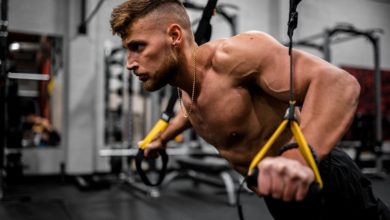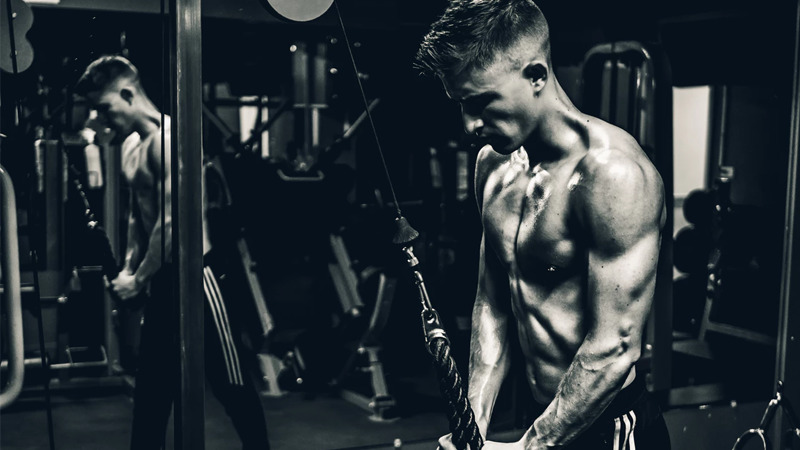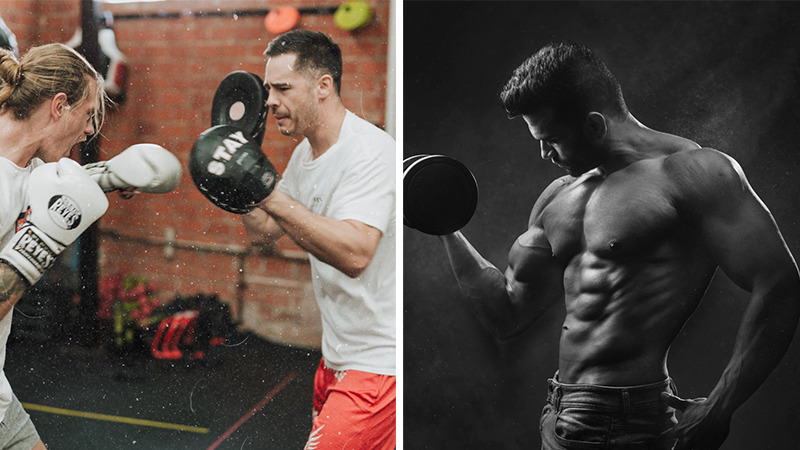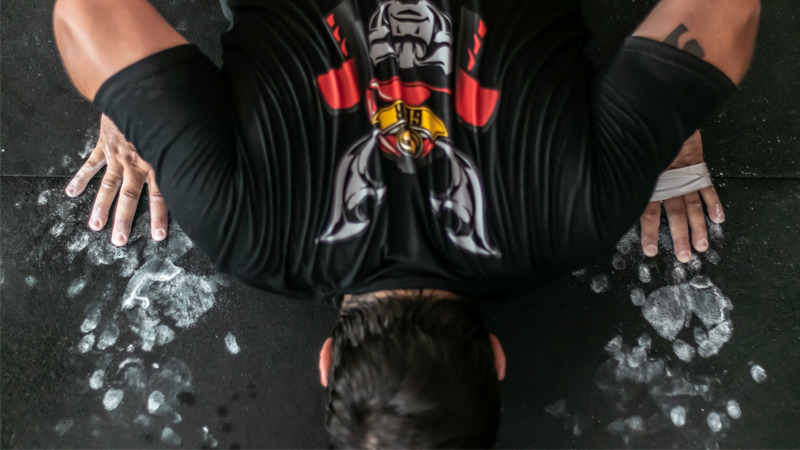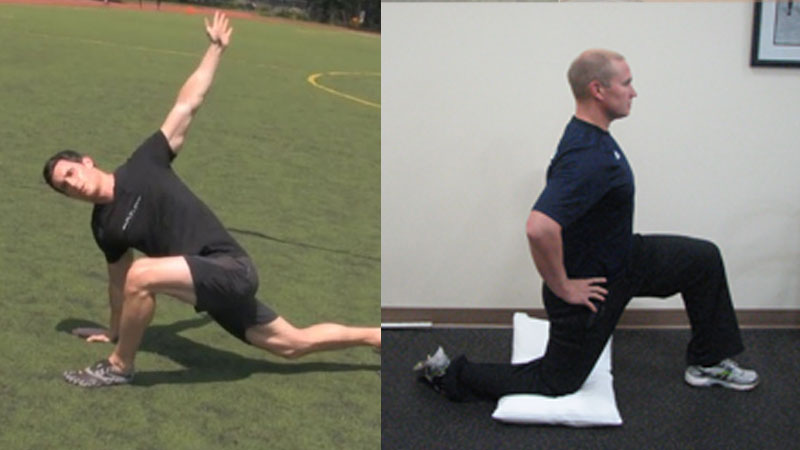
It’s okay being absolutely jacked. But unless you’ve got the mobility to go with it, you’ll find that your athletic performance isn’t what it should be.
No matter how jacked and strong you are, you need to be able to move well if you play sports. A barrel-like chest and quadzilla thighs mean sh*t when it comes to restricted range of motion on the field.
A body made chiseled from granite is actually pretty useless when you move like you’re actually made from granite. And having the posture and movement of your granny just doesn’t cut it in this game bro.
But… much like Daniel-san used mobility workouts to finally beat the Cobra Kai, learning to become as fluid as water with basic flexibility drills will help you boost recovery, power, strength and even aesthetics.
(If you’ve not seen Karate Kid, this example will be lost on your bro. Go watch the movie).
Here’s how you can improve performance with badass mobility workouts…
Mobility is Important for Performance
If you’re a regular reader of SpotMeBro we’re guessing you’re already pretty jacked.
In fact, it’s mandatory to have muscle to follow us, so if you aren’t carrying muscular firepower, you should get the hell out and read some sh*tty men’s magazine instead.
This is a page for real men that train hard and look good.
Anyway, there’s more to performing well on the sports field or courts than pecs, guns and washboard abs.
Good movement comes from practice too.
Mobility isn’t sexy… but it’s still important for athletes that want to win
Mobility might not be as full-on bro as smashing a new PR on bench. Or getting a bicep pump so intense that you can hear the sound of moist panties hitting the floor from the other side of the gym.
But dive into the research and you’ll find a pretty strong correlation between joint range of motion, mobility and athletic success.
And that in itself is kind of cool.
Without basic flexibility, general movements such as running, throwing, squatting and pressing all become much harder.
You’re more likely to get injured. And over time your joints will start to suffer.
Athletes constantly stress their bodies. They need to be able to work efficiently and optimally to not only perform well, but move well too.
When your active range of motion is poor you’ll find your body trying to compensate by using different muscles and movement patterns to try and work around it.
And that’s just a waste of energy.
For example, if your shoulder flexibility is poor, you’ll find yourself using your thoracic spine to help pull your shoulder girdle back when throwing or anything where your arms are overhead.
Poor hip flexibility does the same at the lumbar spine, pulling it out of a stable position.
Not only does this result in energy ‘leak’ where your muscles use loads of energy to move inefficiently, it can cause injuries too.
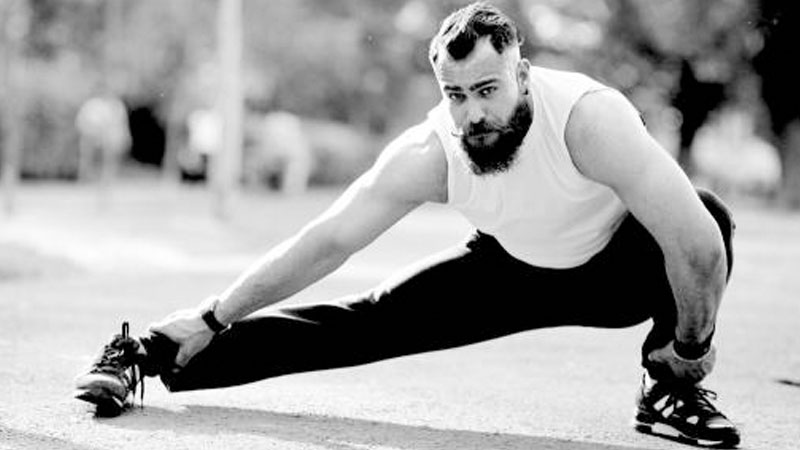
Why Should You Practice Your Mobility Workout?
Good mobility and improved performance go hand in hand.
Like peanut butter and dark chocolate, vanilla whey and a banana.
But why exactly is a mobility workout important to improve performance?
Consistent mobility practice improves flexibility
Having a pre-designed mobility workout that targets your problem areas helps to improve active and passive range of motion over time.
Much like lifting weights gets your muscles jacked or tons of cardio boosts endurance, flexibility work improves joint movement quality significantly.
Moving your joints through their natural range of motion in a repeated, slow and steady way will help to reduce tension over time.
That’s just basic progression and adaptation.
You’re kind of ‘teaching’ your body that it can relax and allow more joint movement to take place. It’s not something that takes place right away, but be consistent and persistent and you’ll notice some big improvements over time.
A mobility workout helps you recover from hard training
As a hard working athlete you don’t have it easy. You’re constantly placing physical (and mental) stress on your body to force it to adapt and improve.
And this can take its toll pretty fast if there’s a weak link in the chain somewhere.
Low-intensity mobility drills help to flood your body with relaxation and boost recovery. It triggers part of your nervous system that reduces stress hormones such as cortisol and adrenaline. This helps prime your body for recovery and rejuvenate itself ready for another hard workout.
Do your mobility workout every day – particularly after a stressful one, right before bedtime and you’ll sleep like a baby on ketamine.
Reduces injuries
Your body was designed to be active, free and fluid.
You shouldn’t struggle to put your hands above your head without shaking like a sh*tting dog, or to squat ass to grass without nearly having a stroke.
But many bros move like a tin man left out in the cold overnight.
And that can lead to serious injuries such as tears, strains and pulls. And you can’t get massive if you can’t train, right?
Research in places like the Journal of Strength and Conditioning have found significant benefits to injury rates in fighters that work through daily mobility workouts.
And there’s a ton of evidence to show that those who performs better at flexibility protocols such as functional movements screens get injured less often too.
Mobility prior to explosive exercise enhances performance
Dynamic mobility workouts help to prepare your body for tough workouts such as those that involve speed, power and strength.
Research shows that mobility workouts help to activate and ‘potentiate‘ muscle.This means that it tricks your body into switching on maximum muscle fibers for a period of time after mobility training, that improve performance.
The result is better performance when it comes to neural drive and exercises that involved higher rates of force production.
Mobility workouts act like black magic on your nervous system, helping it optimize itself for high-intensity exercise. Many pro athletes make mobilization drills a big part of their ‘performance prep’ for that reason.
And you should too.
Mobility might even help you add more muscle mass
Other than volume and load, a key stimulus for muscle growth is range of motion. The further you can move your muscle through its active range, the more muscle fibers your activate and then grow.
Muscles that can’t travel as far during exercises like the bench press, squat or overhead press won’t get an optimal stimulus. And you might also cause other muscles to take over.
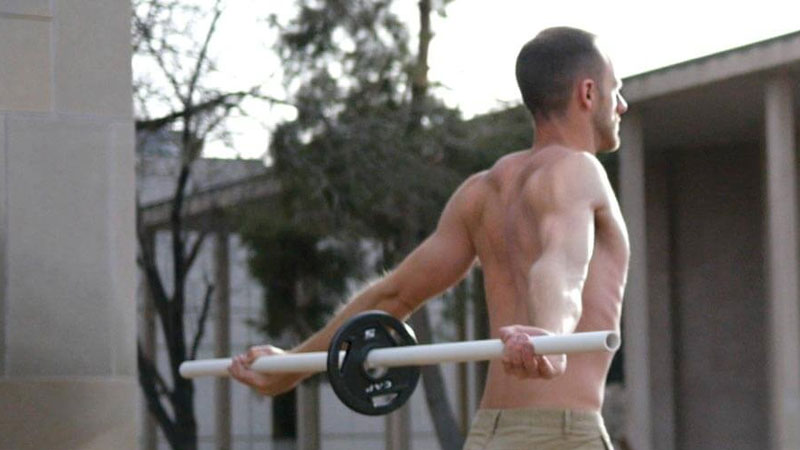
Improve Mobility and Performance with Our Sample Workout
There’s a large amount of ‘flexibility’ (we used that pun on purpose brah) when it comes to a mobility workout to improve performance.
We’ve moved on from the toe touches that your old gym teacher used to show you when he wasn’t taking pictures of you in the school shower.
Science has better ideas on how to stay supple these days.
We like to take a joint by joint approach and work from ‘toe to top’. Not for any specific reason other than you’ve got less chance of forgetting your routine if it’s systematic and pre-planned.
Here are your guidelines:
- Make sure you relax your breathing throughout each exercise. This will promote relaxation by flooding your cells with oxygen and slowing down your heart rate.
- Start off with a small range of motion in the first couple of reps, and then try to improve the range as you move through each rep.
- Aim to complete 15-20 reps for each exercise. Perform 2-3 sets with just a small amount of rest time between.
We also really like full-body mobility ‘flows’ to finish our flexibility workouts. It’s kind of just putting everything together to optimize body integration and getting you moving as a system rather than in isolation.
And it just feels cool too.
Here is your mobility workout to jack up your flexibility and improve performance.
Ankles, knees and hips
- Frog stretch
- Pigeon stretch
- Kneeling lunge into dynamic hip flexor stretch
- Squat to internal rotation (squat down and then let one knee rotate inward and down to the floor)
- Cossack squat
Shoulders, elbows and neck
- Cat and camel (hump and hollow)
- Shoulder dislocations with bar or dowel
- Prone YLTWs
- Prone rotate and reach
Full body
- Overhead squats
- Squats with one-arm overhead reach / rotation
- Lunges with side-to-side rotation
